(Guest post by Taha Kass-Hout and Hend Alhinnawi from Humanitarian Tracker, which is a non-profit global forum that connects and empowers citizens using innovation in technology to support humanitairan causes. Taha serves as Founder and CEO, and Hend the Co-Founder and COO of Humanitarian Tracker)
Humanitarian Tracker (HT), a volunteer-based non-profit organization, has been crowdsourcing information from Syria over the past 3 years. As you’ve all heard by now, 14 years after its eradication, Polio has re-emerged in Syria. What you didn’t hear was that several reports from the ground were received and published by Syria Tracker, a project of HT, weeks before it became mainstream.
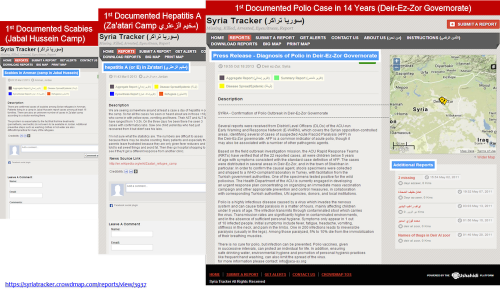 So, how was this possible? Traditionally, information flow in one direction and usually takes a very long time before it makes it to official, national or regional bodies. However, in the last decade, a new model has emerged. One where everyone is an active co-participant and information is flowing bi-directionally and in a much faster manner.
So, how was this possible? Traditionally, information flow in one direction and usually takes a very long time before it makes it to official, national or regional bodies. However, in the last decade, a new model has emerged. One where everyone is an active co-participant and information is flowing bi-directionally and in a much faster manner.
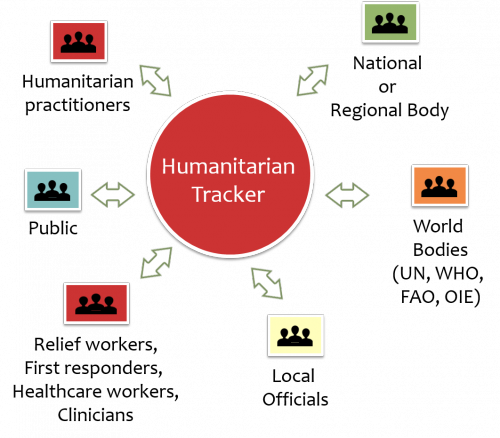 This is largely due to the ability to send messages, e-mails, tweets and updates from the palm of your hand. In fact, almost 50% of MENA internet users access the web via their mobile phones. That means when an event occurs, you’re more likely to receive initial information from a text message, tweet or update ahead of media or official sources - how far ahead, sometimes up to weeks if not months.
This is largely due to the ability to send messages, e-mails, tweets and updates from the palm of your hand. In fact, almost 50% of MENA internet users access the web via their mobile phones. That means when an event occurs, you’re more likely to receive initial information from a text message, tweet or update ahead of media or official sources - how far ahead, sometimes up to weeks if not months.
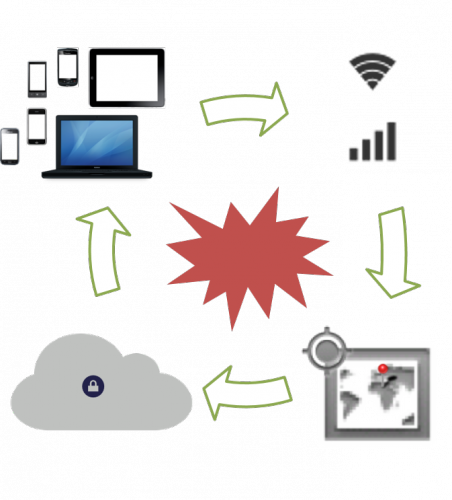 So what happens when you combine citizen and digital diplomacy? You get Syria Tracker! Syria Tracker, the flagship project of Humanitarian Tracker was launched in April 2011, a few weeks after the conflict in Syria broke out. It combines eye-witness reporting, on the ground community reports, with news and social media mining to give a holistic overview of what is happening in Syria. Over the past three years, we’ve received over 70,000 crowdsource reports, of which we’ve only published less than 6%. We want to make sure we’re able to protect the identity of those submitting the information and also verify these reports before publishing them. People can submit reports through our website, e-mail or twitter. No SMS allowed however since the government owns the cell network.
So what happens when you combine citizen and digital diplomacy? You get Syria Tracker! Syria Tracker, the flagship project of Humanitarian Tracker was launched in April 2011, a few weeks after the conflict in Syria broke out. It combines eye-witness reporting, on the ground community reports, with news and social media mining to give a holistic overview of what is happening in Syria. Over the past three years, we’ve received over 70,000 crowdsource reports, of which we’ve only published less than 6%. We want to make sure we’re able to protect the identity of those submitting the information and also verify these reports before publishing them. People can submit reports through our website, e-mail or twitter. No SMS allowed however since the government owns the cell network.
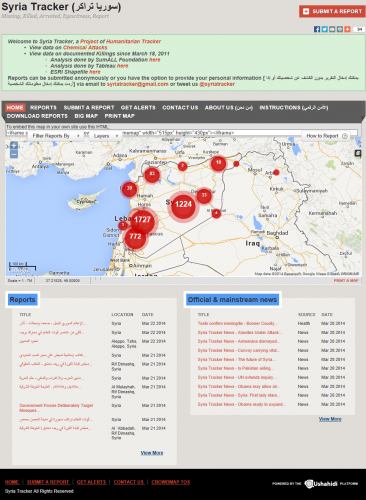 In terms of news and social media, we’ve mined over 180,000 news articles and 80 over million tweets.
In terms of news and social media, we’ve mined over 180,000 news articles and 80 over million tweets.
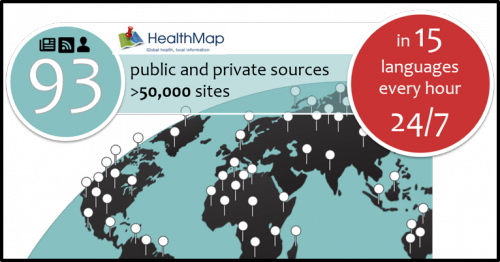 These categories you see were dictated by the reports received and have evolved over time to include atrocities, Humanitarian, development, relief needs and disease outbreaks.
These categories you see were dictated by the reports received and have evolved over time to include atrocities, Humanitarian, development, relief needs and disease outbreaks.
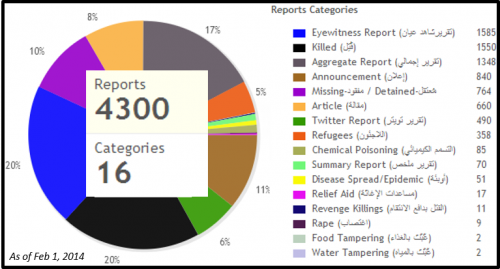 World Disaster Report published in 2013 by IFRC described Syria Tracker as one of the longest running crisis maps, then went on to describe our methods to ensure privacy of citizens and groups reporting and our high quality verification approach and why the UN and others have incorporated our data within their mission and operations
World Disaster Report published in 2013 by IFRC described Syria Tracker as one of the longest running crisis maps, then went on to describe our methods to ensure privacy of citizens and groups reporting and our high quality verification approach and why the UN and others have incorporated our data within their mission and operations
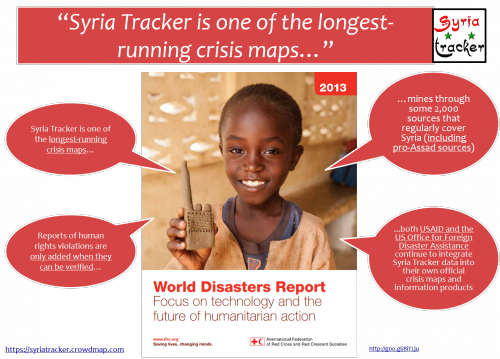 In fact, people were so eager to have their voices heard, we were receiving reports to Syria Tracker even during the internet blackout.
In fact, people were so eager to have their voices heard, we were receiving reports to Syria Tracker even during the internet blackout.
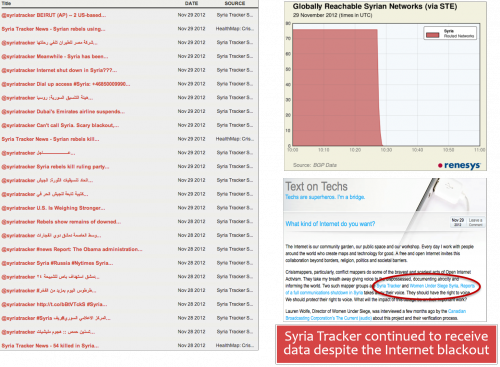 Data Speaks and governments, UN Agencies and news outlets are listening. These entities typically rely on official sources of information and they have incorporated Syria Tracker’s crowdsource reports as a reliable source as you can see in these maps published by USAID and Department of State.
Data Speaks and governments, UN Agencies and news outlets are listening. These entities typically rely on official sources of information and they have incorporated Syria Tracker’s crowdsource reports as a reliable source as you can see in these maps published by USAID and Department of State.
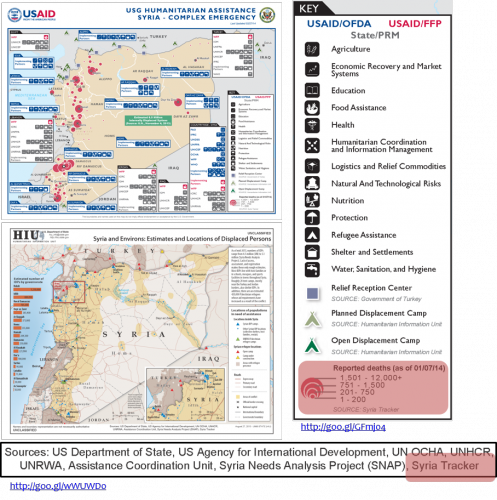 According to our data 85% of killings in Syria is due to small arms, like gunshot and artillery, or air bombardment. To put things into perspective, the global average for violence is ~8 killings per 100,000 with 14 countries considered as the most gangrenous places exceeding 30 per 100,000. Killing rate has reached ~40 killings per 10,000 population. Were one of the first organizations to highlight citizen targeting. The ones who suffered the most have been women and children. 1/10 deaths in Syria due to the conflict is a child.
According to our data 85% of killings in Syria is due to small arms, like gunshot and artillery, or air bombardment. To put things into perspective, the global average for violence is ~8 killings per 100,000 with 14 countries considered as the most gangrenous places exceeding 30 per 100,000. Killing rate has reached ~40 killings per 10,000 population. Were one of the first organizations to highlight citizen targeting. The ones who suffered the most have been women and children. 1/10 deaths in Syria due to the conflict is a child.
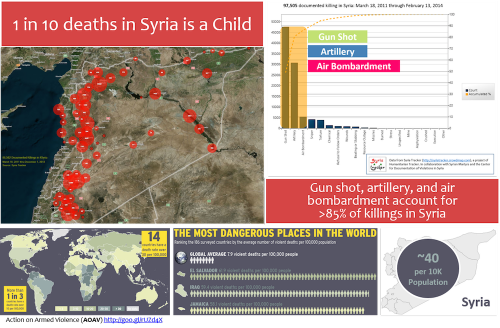 Oxford Research Group recently published a chilling report, titled Stolen Futures, highlighting the killing of children in Syria’s conflict. Over 11,000 Children have been killed. Oxford Research Group has corroborated several data sources, and Syria Tracker was one of those. This report highlighted children targeted killing, such as sniper, stabbing or torture. According to our data
Oxford Research Group recently published a chilling report, titled Stolen Futures, highlighting the killing of children in Syria’s conflict. Over 11,000 Children have been killed. Oxford Research Group has corroborated several data sources, and Syria Tracker was one of those. This report highlighted children targeted killing, such as sniper, stabbing or torture. According to our data
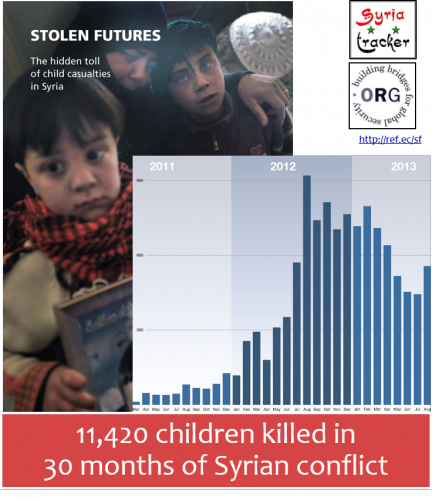 Here again we see the top 3 causes of killing, it started with gunshots then escalated the past two years to include artillery and air bombardment. While women have been “caught in the cross-fire” so to speak, it is evident that the proportion of female casualties is steadily rising indicating that it’s more than a “collateral damage”.
Here again we see the top 3 causes of killing, it started with gunshots then escalated the past two years to include artillery and air bombardment. While women have been “caught in the cross-fire” so to speak, it is evident that the proportion of female casualties is steadily rising indicating that it’s more than a “collateral damage”.
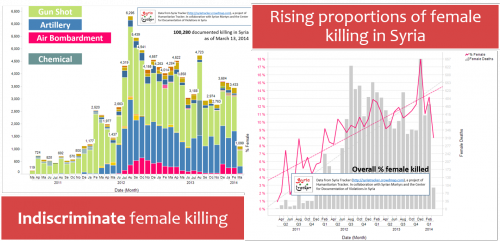 In fact, a significant amount of these casualties are a result of indiscriminant killing through sniper fire, or direct targeting through sniper fire, beating and stabbing, or torture along with an increasing trend. Most stabbing victims have been killed in massacres.
In fact, a significant amount of these casualties are a result of indiscriminant killing through sniper fire, or direct targeting through sniper fire, beating and stabbing, or torture along with an increasing trend. Most stabbing victims have been killed in massacres.
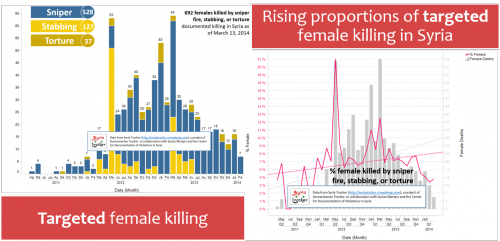 Female casualties are occurring in the most part of Syria but the data also shows hot spots. Take for example Jebel Saman, Aleppo: >20% of all female casualties recorded, occurred in Jebel Saman, Aleppo; consequently it is also the location of over 24% of all sniper related female deaths. Another example is Homs: >22% of stabbing-related killings happened there.
Female casualties are occurring in the most part of Syria but the data also shows hot spots. Take for example Jebel Saman, Aleppo: >20% of all female casualties recorded, occurred in Jebel Saman, Aleppo; consequently it is also the location of over 24% of all sniper related female deaths. Another example is Homs: >22% of stabbing-related killings happened there.
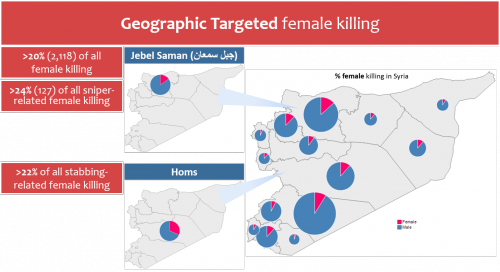 Humanitarian Tracker is a worldwide trusted resource. Over the past years, we’ve built a network of partners and consumers of our data and services. This is crucial for the future, as we’re launching a global platform and specifically addressing development (not just relief) needs in Syria and beyond. In particular, we want to acknowledge our great partnership with Ushahidi and the community support that enabled us to sustain crowdsourcing information out of Syria.
Humanitarian Tracker is a worldwide trusted resource. Over the past years, we’ve built a network of partners and consumers of our data and services. This is crucial for the future, as we’re launching a global platform and specifically addressing development (not just relief) needs in Syria and beyond. In particular, we want to acknowledge our great partnership with Ushahidi and the community support that enabled us to sustain crowdsourcing information out of Syria.
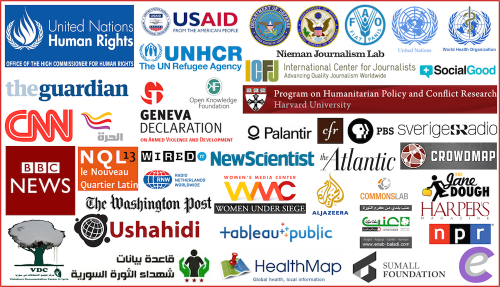 Syria Tracker is one example of how you can combine citizen and digital diplomacy for social good. You can use the platform, resources and tools to track other events, and we have been assisting with many others worldwide. Finally, we want to recognize the team behind Humanitarian Tracker. A team of social and data scientists, and yes we have a psychologist on the team!
Syria Tracker is one example of how you can combine citizen and digital diplomacy for social good. You can use the platform, resources and tools to track other events, and we have been assisting with many others worldwide. Finally, we want to recognize the team behind Humanitarian Tracker. A team of social and data scientists, and yes we have a psychologist on the team!
 We’d love to hear your thoughts, feedback or possible collaboration. Thank YOU!
We’d love to hear your thoughts, feedback or possible collaboration. Thank YOU!
 So, how was this possible? Traditionally, information flow in one direction and usually takes a very long time before it makes it to official, national or regional bodies. However, in the last decade, a new model has emerged. One where everyone is an active co-participant and information is flowing bi-directionally and in a much faster manner.
So, how was this possible? Traditionally, information flow in one direction and usually takes a very long time before it makes it to official, national or regional bodies. However, in the last decade, a new model has emerged. One where everyone is an active co-participant and information is flowing bi-directionally and in a much faster manner.
 This is largely due to the ability to send messages, e-mails, tweets and updates from the palm of your hand. In fact, almost 50% of MENA internet users access the web via their mobile phones. That means when an event occurs, you’re more likely to receive initial information from a text message, tweet or update ahead of media or official sources - how far ahead, sometimes up to weeks if not months.
This is largely due to the ability to send messages, e-mails, tweets and updates from the palm of your hand. In fact, almost 50% of MENA internet users access the web via their mobile phones. That means when an event occurs, you’re more likely to receive initial information from a text message, tweet or update ahead of media or official sources - how far ahead, sometimes up to weeks if not months.
 So what happens when you combine citizen and digital diplomacy? You get Syria Tracker! Syria Tracker, the flagship project of Humanitarian Tracker was launched in April 2011, a few weeks after the conflict in Syria broke out. It combines eye-witness reporting, on the ground community reports, with news and social media mining to give a holistic overview of what is happening in Syria. Over the past three years, we’ve received over 70,000 crowdsource reports, of which we’ve only published less than 6%. We want to make sure we’re able to protect the identity of those submitting the information and also verify these reports before publishing them. People can submit reports through our website, e-mail or twitter. No SMS allowed however since the government owns the cell network.
So what happens when you combine citizen and digital diplomacy? You get Syria Tracker! Syria Tracker, the flagship project of Humanitarian Tracker was launched in April 2011, a few weeks after the conflict in Syria broke out. It combines eye-witness reporting, on the ground community reports, with news and social media mining to give a holistic overview of what is happening in Syria. Over the past three years, we’ve received over 70,000 crowdsource reports, of which we’ve only published less than 6%. We want to make sure we’re able to protect the identity of those submitting the information and also verify these reports before publishing them. People can submit reports through our website, e-mail or twitter. No SMS allowed however since the government owns the cell network.
 These categories you see were dictated by the reports received and have evolved over time to include atrocities, Humanitarian, development, relief needs and disease outbreaks.
These categories you see were dictated by the reports received and have evolved over time to include atrocities, Humanitarian, development, relief needs and disease outbreaks.
 World Disaster Report published in 2013 by IFRC described Syria Tracker as one of the longest running crisis maps, then went on to describe our methods to ensure privacy of citizens and groups reporting and our high quality verification approach and why the UN and others have incorporated our data within their mission and operations
World Disaster Report published in 2013 by IFRC described Syria Tracker as one of the longest running crisis maps, then went on to describe our methods to ensure privacy of citizens and groups reporting and our high quality verification approach and why the UN and others have incorporated our data within their mission and operations
 In fact, people were so eager to have their voices heard, we were receiving reports to Syria Tracker even during the internet blackout.
In fact, people were so eager to have their voices heard, we were receiving reports to Syria Tracker even during the internet blackout.
 Data Speaks and governments, UN Agencies and news outlets are listening. These entities typically rely on official sources of information and they have incorporated Syria Tracker’s crowdsource reports as a reliable source as you can see in these maps published by USAID and Department of State.
Data Speaks and governments, UN Agencies and news outlets are listening. These entities typically rely on official sources of information and they have incorporated Syria Tracker’s crowdsource reports as a reliable source as you can see in these maps published by USAID and Department of State.
 According to our data 85% of killings in Syria is due to small arms, like gunshot and artillery, or air bombardment. To put things into perspective, the global average for violence is ~8 killings per 100,000 with 14 countries considered as the most gangrenous places exceeding 30 per 100,000. Killing rate has reached ~40 killings per 10,000 population. Were one of the first organizations to highlight citizen targeting. The ones who suffered the most have been women and children. 1/10 deaths in Syria due to the conflict is a child.
According to our data 85% of killings in Syria is due to small arms, like gunshot and artillery, or air bombardment. To put things into perspective, the global average for violence is ~8 killings per 100,000 with 14 countries considered as the most gangrenous places exceeding 30 per 100,000. Killing rate has reached ~40 killings per 10,000 population. Were one of the first organizations to highlight citizen targeting. The ones who suffered the most have been women and children. 1/10 deaths in Syria due to the conflict is a child.
- Children make up ~11% of all documented killings in Syria
- 7 in 10 children killed by explosive weapons
- Boys are twice as likely to be killed as girls
- Deliberately targeting children while waiting in breadlines or attending school, bombed in their homes:
- >700 have been summarily executed and tortured
- >180 infants (between the ages of 1 month and 12 months) killed by small arms
- >200 boys under the age of 13 killed by sniper fire
 Syria Tracker is one example of how you can combine citizen and digital diplomacy for social good. You can use the platform, resources and tools to track other events, and we have been assisting with many others worldwide. Finally, we want to recognize the team behind Humanitarian Tracker. A team of social and data scientists, and yes we have a psychologist on the team!
Syria Tracker is one example of how you can combine citizen and digital diplomacy for social good. You can use the platform, resources and tools to track other events, and we have been assisting with many others worldwide. Finally, we want to recognize the team behind Humanitarian Tracker. A team of social and data scientists, and yes we have a psychologist on the team!
 We’d love to hear your thoughts, feedback or possible collaboration. Thank YOU!
We’d love to hear your thoughts, feedback or possible collaboration. Thank YOU!